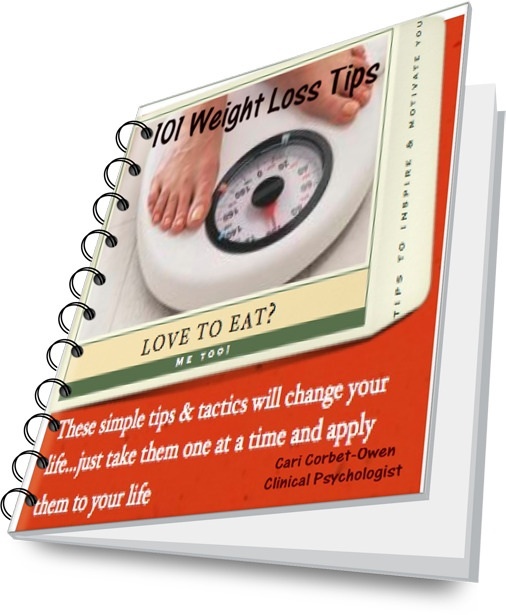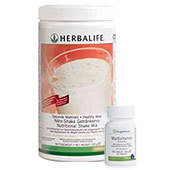All vitamins, minerals, herbs
Question
Hello Leigh-Anne;
My name is william from edmonton, canada.
Basically, I would like to know benefits and dangers from ALL vitamins, minerals, and herbs, derived from a vegan diet. Fruits, vegetables, nuts, seeds.
I hope you can help me.
Sincerely
William
William,
Here is the info you asked for. I would also recommend that, being a vegan, you visit the website: http://www.vegansociety.com
Thiamin
Other names: Vitamin B1
1998 RDA: Men 1.2 mg/day
Chief functions: Part of coenzyme TPP (thiamin pyrophosphate) used in energy metabolism
Significant sources: whole-grain, fortified, or enriched grain products; moderate amounts in all nutritious food; pork; easily destroyed by heat
Deficiency disease: Beriberi (wet, with edema; dry, with muscle wasting)
Deficiency symptoms: enlarged heart, cardiac failure, weakness, apathy, poor short-term memory, confusion, irritability, anorexia and weight loss
Toxicity symptoms: none reported
Riboflavin
Other names: Vitamin B2
1998 RDA: Men 1.3 mg/day
Chief functions: part of coenzyme FMN ( flavin mononucleotide) and FAD (flavin adenine dinucleotide) used in energy metabolism
Significant sources: milk products (yogurt, cheese); enriched or whole grains; liver; easily destroyed by ultraviolet light and irradiation
Deficiency disease: ariboflavinosis
Deficiency symptoms: inflamed eyelids and sensitivity to light, reddening of cornea, sore throat; cracks and redness at corners of mouth; painful, smooth, purplish red tongue, inflammation characterized by lesions covered with greasy scales (skin symptoms)
Toxicity symptoms: none reported
Niacin
Other names: nicotinic acid, nicotinamide, niacinamide, vitamin B3; precursor is dietary tryptophan (an amino acid)
1998 RDA: Men 16 mg NE/day
Upper level: 35 mg/day
Chief functions: part of coenzymes NAD (nicotinamide adenine dinucleotide) and NADP (its phosphate form) used in energy metabolism
Significant sources: milk, eggs, meat, poultry, fish, whole-grain and enriched breads and cereals, nuts, and all protein-containing foods
Deficiency disease: pellagra
Deficiency symptoms: diarrhea, abdominal pain, vomiting, inflamed, swollen, smooth, bright red tongue, depression, apathy, fatigue, loss of memory, headache, bilateral symmetrical rash on skin areas exposed to sunlight
Toxicity symptoms: blurred vision, nausea, vomiting, painful flush, hives, and rash, excessive sweating, liver damage, impaired glucose tolerance
Biotin
1998 Adequate Intake: 30 micrograms/day
Chief functions: part of coenzyme used in energy metabolism, fat synthesis, amino acid, metabolism, and glycogen synthesis
Significant sources: widespread in foods; organ meats, egg yolks, soybeans, fish, whole grains; also produced by GI bacteria
Deficiency symptoms: depression, lethargy, hallucinations, numb or tingling sensation in the arms and legs, red, scaly rash around the eyes, nose, and mouth; hair loss
Toxicity symptoms: none reported
Pantothenic acid
1998 Adequate Intake: 5mg/day
Chief functions: part of coenzyme A, used in energy metabolism
Significant sources: widespread in foods; organ meats, mushrooms, avocados, broccoli, whole grains; easily destroyed by food processing
Deficiency symptoms: vomiting, nausea, stomach cramps, insomnia, fatigue, depression, irritability, restlessness, apathy, hypoglycemia, increased sensitivity to insulin
Toxicity symptoms: none reported
Vitamin B6
Other names: pyridoxine, pyridoxal, pyridoxamine
19998 RDA: 1.3 mg/day
Chief functions: amino acid and fatty acid metabolism; helps to convert tryptophan to niacin and to serotonin; helps to make red blood cells
Significant sources: meats, fish, poultry, potatoes, legumes, noncitrus fruits, fortified cereals, liver, soy products; easily destroyed by heat
Deficiency symptoms: anemia, depression, confusion, abnormal brain wave pattern, convulsions, scaly dermatitis
Toxicity symptoms: depression, fatigue, irritability, headaches, nerve damage causing numbness and muscle weakness leading to an inability to walk and convulsions, skin lesions
Folate
Other names: folic acid, folacin, pteroylglutamic acid (PGA)
1998 RDA: 400 mcg/day
Upper level: 1000 mcg/day
Chief functions: used in DNA synthesis and therefore a part of new cell formation
Significant sources: fortified grains. Leafy green vegetables, legumes, seeds, liver; easily destroyed by heat and oxygen
Deficiency symptoms: anemia, smooth, red tongue, mental confusion, weakness, fatigue, irritability, headache, elevated homocysteine
Toxicity symptoms: masks vitamin B12-deficiency symptoms
Vitamin B12
Other names: cobalamine
1998 RDA: 2.4 mcg/day
Chief functions: used in new cell synthesis; helps to maintain nerve cells; reforms folate coenzyme; helps to break down some fatty acids and amino acids
Significant sources: animal products (meat, fish, poultry, shellfish, milk, cheese, eggs), fortified cereals; easily destroyed by microwave cooking
Deficiency disease: pernicious anemia
Deficiency symptoms: anemia, smooth, sore tongue, fatigue, degeneration of peripheral nerves progressing to paralysis, hypersensitive skin
Toxicity symptoms: none reported
Choline
1998 Adequate Intake: Men 550 mg/day
Upper level: 3500 mg/day
Chief functions: needed for the synthesis of the neurotransmitter acetylcholine and the phospholipids lecithin
Deficiency symptoms: liver damage
Toxicity symptoms: body odor, sweating, salivation, reduced growth rate, low blood pressure, liver damage
Significant sources: milk, liver, eggs, peanuts
Vitamin C
Other names: ascorbic acid
2000 RDA: Men 90 mg/day; smokers +35 mg/day
Upper level: 2000 mg/day
Chief functions: collagen synthesis (strengthens blood vessel walls, forms scar tissue, provides matrix for bone growth), antioxidant, thyroxin synthesis, amino acid metabolism, strengthens resistance to infection, helps in absorption of iron
Significant sources: citrus fruits, cabbage-type vegetables, dark green vegetables, cantaloupe, strawberries, lettuce, tomatoes, potatoes, papayas, mangoes
Deficiency disease: scurvy
Deficiency symptoms: anemia, atherosclerotic plaques, pinpoint hemorrhages, bone fragility, joint pain, poor wound healing, frequent infections, bleeding gums, loosened teeth, muscle degeneration and pain, hysteria, depression, rough skin, blotchy bruises
Toxicity symptoms: nausea, abdominal cramps, diarrhea, headache, fatigue, insomnia, hot flashes, skin rashes, interference with medical tests, aggravation of gout symptoms, urinary tract problems, kidney stones
Vitamin A
Other names: retinol, retinal, retinoic acid; precursors are carotenoids such as betacarotene
2001 RDA: Men 900 mcg RAE/day
Upper Level: 3000 mcg/day
Deficiency disease: hypovitaminosis A
Toxicity disease: hypervitaminosis A
Deficiency symptoms: anemia, often masked by dehydration, cessation of bone growth, painful joints, impaired enamel formation, cracks in teeth, tendency to decay, atrophy of dentin-forming cells, changes in lining of GI tract, diarrhea, night blindness, changes in epithelial tissue, drying of eye, triangular gray spots on eye, softening of the cornea, corneal degeneration and blindness, suppression of immune reactions, frequent respiratory, digestive, bladder, vaginal, and kidney infections, brain and spinal cord growth too fast for stunted skull and spine, plugging of hair follicles with keratin, forming white lumps, kidney stones
Toxicity symptoms: loss of hemoglobin and potassium by red blood cells, cessation of menstruation, slowed clotting time, easily induced bleeding, increased activity of osteoclasts causing decalcification, joint pain, fragility, stunted grothw, and thickening of long bones, increase of pressure inside skull, mimicking brain tumor, headaches, nausea, vomiting, abdominal pain, diarrhea, weight loss, overstimulation of immune reactions, loss of appetite, irritability, fatigue, insomnia, restlessness, headaches, blurred vision, nausea, vomiting, muscle weakness, dryness of skin, itching, peeling, rashes, dry scaly lips; cracking and bleeding of lips; nosebleeds; loss of hair; brittle nails, amenorrhea, jaundice, enlargement of liver and spleen, massive accumulation of fat and vitamin A in liver, birth defects
Chief functions: vision, maintenance of cornea, epithelial cells, mucous membranes, skin; bone and tooth growth; reproduction; immunity
Significant sources: retinol- fortified milk, cheese, cream, butter, fortified margarine, eggs, liver; betacarotene- spinach and other dark leafy greens, broccoli, deep orange fruits and vegetables
Vitamin D
Other names: calciferol, 1,25-dihydroxy vitamin D; the animal version is vitamin D3 or cholecalciferol; the plant verios is vitamin D2 or ergocalciferol; precursor is the body's own cholesterol
1997 Adequate Intake:
Adults: 5 mcg/day (19-50yrs)
10 mcg/day (51-70 yrs.)
15 mcg/day (>70 yrs)
Upper level: 50 mcg/day
Chief functions: mineralization of bones (raises blood calcium and phosphorus by increasing absorption from digestive tract, withdrawing calcium from bones, stimulating retention by kidneys)
Significant sources: synthesized in the body with the help of sunlight; fortified milk, margarine, butter, cereals, and chocolate mixes; veal beef, egg yolks, liver, fatty fish (herring, salmon, sardines) and their oils
Deficiency disease: Rickets, osteomalacia
Toxicity disease: hypervitaminosis D
Deficiency symptoms: decreased calcium and/or phosphorus concentration, increased alkaline phosphatase, rickets in children, osteomalacia in adults, increased secretion of calcium in stools, decreased calcium in urine, lax muscles resulting in protrusion of abdomen, muscle spasms, abnormally high secretion of parathormone
Toxicity symptoms: increased calcium and phosphorus concentration, nausea, vomiting, increased excretion of calcium in urine, kidney stones, irreversible kidney damage, loss of appetite, headache, muscle weakness, joint pain, fatigue, excessive thirst, irritability, apathy, calcification of soft tissues (blood vessels, kidneys, heart, lungs, tissues around joints), frequent urination, death
Vitamin E
Other names: alpha-tocopherol
2000 RDA: 15 mg/day
Upper level: 1000 mg/day
Chief functions: antioxidant
Significant sources: polyunsaturated plant oils (margarine, salad dressings, shortenings), leafy green vegetables, wheat germ, whole-grains, liver, egg yolks, nuts, seeds; easily destroyed by heat and oxygen
Deficiency symptoms: red blood cell breakage, anemia, neurological degeneration, weakness, difficulty walking, leg cramps
Toxicity symptoms: augments the effects of anticlotting medication, nausea, stomach cramps, blurred vision, fatigue
Vitamin K
Other names: phylioquinone, menaquinone, menadione, naphthoquinone
2001 Adequate Intake: Men 120 mcg/day
Deficiency symptoms: hemorrhaging, skeletal weakness
Toxicity symptoms: interference with anticlotting medication; vitamin K analogues may cause jaundice, red blood cell hemolysis, and brain damage
Chief functions: synthesis of clotting proteins and bone proteins that regulate calcium
Significant sources: bacterial synthesis in the digestive tract; liver; leafy green vegetables, cabbage-type vegetables; milk
Sodium
1989 Estimated minimum requirement: 500mg/day
Chief functions: maintains normal fluid and electrolyte balance; assists in nerve impulse transmission and muscle contraction
Deficiency symptoms: muscle cramps, mental apathy, loss of appetite
Toxicity symptoms: edema, acute hypertension
Significant sources: table salt, soy sauce, moderate amounts in meats, milks, breads, and vegetables, large amounts in processed foods
Chloride
1989 Estimated minimum requirement: 750 mg/day
Chief functions: maintains normal fluid and electrolyte balance, part of hydrochloric acid found in the stomach, necessary for proper digestion
Deficiency symptoms: do not occur under normal circumstances
Toxicity symptoms: vomiting
Significant sources: table salt, soy sauce, moderate amounts in meats, milks, eggs, large amounts in processed foods
Potassium
1989 Estimated minimum requirement: 2000 mg/day
Chief functions: maintains normal fluid and electrolyte balance, facilitates many reactions, supports cell integrity, assists in nerve impulse transmission and muscle contractions
Deficiency symptoms: muscular weakness, paralysis, confusion
Toxicity symptoms: muscular weakness, vomiting, if given into a vein can stop the heart,
Significant sources: all whole foods; meats, milks, fruits, vegetables, grains, legumes
Calcium
1997 Adequate Intake: 1000 mg/day (19-50 yr), 1200 mg/day (51 and older)
Upper level: 2500 mg/day
Chief functions: mineralization of bones and teeth; also involved in muscle contraction and relaxation, nerve functioning, blood clotting, blood pressure, and immune defenses
Deficiency symptoms: stunted growth in children, bone loss in adults
Toxicity symptoms: constipation; increased risk of urinary stone formation and kidney dysfunction; interference with absorption of other minerals
Significant sources: milk and milk products, small fish, tofu, greens, legumes
Phosphorus
1997 RDA: 700 mg/day
Upper level: 4000 mg/day
Chief functions: mineralization of bones and teeth; part of every cell; important in genetic material, part of phospholipids, used in energy transfer and in buffer systems that maintain acid-base balance
Deficiency symptoms: weakness, bone pain
Toxicity symptoms: low blood calcium levels
Significant sources: all animal tissues (meat, fish, poultry, eggs, milk)
Magnesium
1997 RDA: Men 400 mg/day
Upper level: 350 mg/day nonfood magnesium
Chief functions: bone mineralization, building of protein, enzyme action, normal muscle contraction, nerve impulse transmission, maintenance of teeth, and functioning of immune system
Deficiency symptoms: weakness; confusion; if extreme, convulsions, bizarre muscle movements (esp. of eye and face), hallucinations, and difficulty in swallowing; in children, growth failure
Toxicity symptoms: from nonfood sources only; diarrhea, alkalosis, dehydration
Significant sources: nuts, legumes, whole grains, dark green vegetables, seafood, chocolate, cocoa
Iron
2001 RDA: Men 8 mg/day
Upper level: 45 mg/day
Chief functions: part of the protein hemoglobin that carries oxygen in the blood; part of the protein myoglobin in the muscles, which makes oxygen available for muscle contraction; necessary for the use of energy
Deficiency symptoms: anemia, weakness, pallor, headaches, reduced resistance to infection, inability to concentrate, lowered cold tolerance
Toxicity symptoms: iron overload: fatigue, infections, liver injury, possible increased risk of colon cancer, growth retardation in children, acidosis, bloody stools, shock
Significant sources: red meats, fish, poultry, shell fish, eggs, legumes, dried fruits
Zinc
2001 RDA: Men 11 mg/day
Upper level: 40 mg/day
Chief functions: part of insulin and many enzymes; involved in making genetic material and proteins, immune reactions, transport of vitamin A, taste perception, wound healing, the making of sperm, and normal fetal development
Deficiency symptoms: growth failure in children, dermatitis, sexual retardation, loss of taste, poor wound healing
Toxicity symptoms: fever, nausea, vomiting, diarrhea, muscle incoordination, dizziness, anemia, accelerated atherosclerosis, kidney failure
Significant sources: protein-containing foods: meats, fish, shell fish, poultry, whole grains, vegetables
Iodine
2001 RDA: 150 mcg/day
Upper level: 1.1 mg/day
Chief functions: a component of the thyroid hormones that help to regulate growth, development, and metabolic rate
Deficiency symptoms: goiter, cretinism
Toxicity symptoms: depressed thyroid activity; goiter like thyroid enlargement
Significant sources: iodized salt; seafood; plants grown in iodine-rich soil and animals fed those plants
Selenium
2000 RDA: 55 mcg/day
Upper level: 400 mcg/day
Chief functions: part of an enzyme that defends against oxidation; regulates thyroid hormone
Deficiency symptoms: associated with Keshan disease
Toxicity symptoms: skin rash; abdominal pain; nail and hair brittleness and loss; fatigue, irritability, and nervous system disorders
Significant sources: seafoods, organ meats; other meats, whole grains, and vegetables (depending on soil content)
Copper
2001 RDA: 900 mcg/day
Upper level: 10 mg/day
Chief functions: helps form hemoglobin; part of several enzymes
Deficiency symptoms: anemia
Toxicity symptoms: vomiting, diarrhea, liver damage
Significant sources: seafood, nuts, legumes, whole grains
Manganese
2001 Adequate Intake: Men 2.3 mg/day
Upper level: 11 mg/day
Chief cunctions: cofactor for several enzymes
Deficiency symptoms: rare
Toxicity symptoms: nervous system damage
Significant sources: nuts whole grains, leafy vegetables
Fluoride
1997 Adequate Intake: Men 3.8 mg/day
Upper level: 10 mg/day
Chief functions: cofactor for several enzymes
Deficiency symptoms: susceptibility to tooth decay
Toxicity symptoms: fluorosis (discoloration) of teeth, nausea, vomiting, diarrhea, chest pain, itching
Significant sources: drinking water if fluoride containing or fluoridated; tea; seafood
Chromium
2001 Adequate Intake: Men 35 mcg/day
Chief functions: associated with insulin; needed for energy release from glucose
Deficiency symptoms: abnormal glucose metabolism
Toxicity symptoms: none reported
Significant sources: meat, unrefined grains, vegetable oils
Molybdenum
2001 RDA: 45 mcg/day
Upper level: 2 mg/day
Chief functions: cofactor for several enzymes
Deficiency symptoms: unknown
Toxicity symptoms: none reported
Significant sources: legumes, cereals, organ meats
- Prev:Those last 6-8 pounds
- Next:Teen weightloss
Related Articles
-
diets.
Questioni run a slimming group and have been working with a lady
-
How to calculate metabolic rate by also taking body composition into account?
QuestionHello Dr. Ryan: My name is Ileana, I have a question rega
-
Simple versus complex carbs and nutritional values of corn
QuestionHi Tanya, Is corn on the cob, canned corn considered a s
-
Am I getting enough nutrition with this allergy-free diet?
QuestionQUESTION: Long story short: for 10 years Ive been dealing
-
unsuccessful efforts
QuestionHello, About a month ago I stopped being in denial regar
-
Beta Carotene
QuestionMy wife is an avid fan of making fresh carrot juice and w
- DON'T MISS
- nutrition on a budget
- Regarding Weight Loss
- lower blood pressure
- How can i loose more weight?
- If I Try Fasting, Will I lose Fat or Just Water?
- Protien Powder
- How to lose fat when I a normal weight and exercising kicks off starvation mode?
- Healthy alternative to water.
- Curd, Buttermilk and Honey
- Saturated Fats
More Great Links




